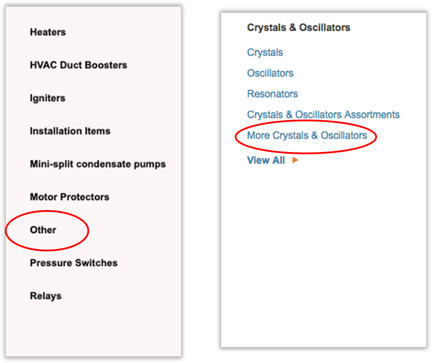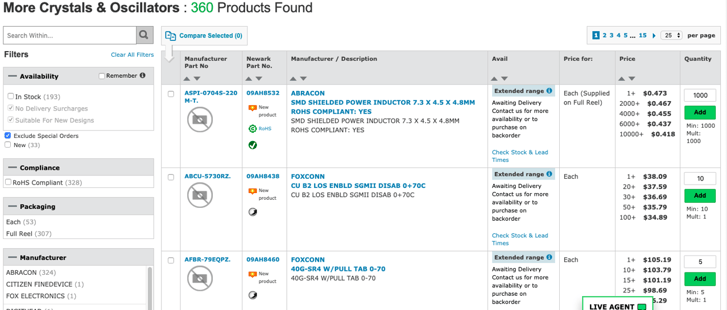Many product taxonomies start with good intentions but are corrupted over time by a proliferation of “miscellaneous” nodes – virtual “junk drawers” that hide product from customers.
In this post I will explain:
- Why junk drawers happen and how to avoid them
- What to do when there really is no choice
What is a junk drawer?
Oh you know. It is that drawer we all have – somewhere. Maybe a drawer in the kitchen that ends up collecting all the things that aren’t “Silverware,” “Cooking Utensils,” “Dishes,” “Glassware,” “Pots & Pans,” and so on that you only have one or two of.
Your navigation taxonomies can fall prey to the same kind of thinking. A taxonomy junk drawer doesn’t happen overnight. It develops over time by teams under pressure to get a lot of new products up on the website fast. Much like the junk drawer at home it contains random stuff, odds and ends, one off items, accessory type products. The result is unspecific categories in your navigation such as, "Other," "Miscellaneous," "More," or "Additional."

What does "Other" mean anyway???
Category names in a navigation taxonomy are supposed to help the visitor get to a product that they will buy as quickly as possible. Not only is “Other” not helpful as a navigation tool but vague categories, with a hodge podge of unrelated products within, make you look like you don’t know anything about the products in the category. Both are going to discourage browsing and buying.

Our second example is a sadly common but terrific example of junk drawer gone wild. The category is “Other Oscillators & Crystals.” Once you get past the alphabet soup product names we can see that nothing on the page is actually an oscillator OR a crystal. So what is all this stuff and why is it in a category called “Other Oscillators & Crystals?” Furthermore, there is no way of filtering through these 360 items. You now have effectively buried all of these products in your taxonomy and hidden them from the buyer’s shopping experience. Who will go poking around in this category just to see what you’ve got in it? No one.
This is a common problem. But there are some best practices when creating and managing taxonomies.
Best practices for taxonomy design
First, maintain Mutual Exclusivity among your products. This means every product will be in only one category. Also, ensure that your product taxonomy is Collectively Exhaustive. This means ensuring there is a place for every product. Together, these can be summed up as “A place for everything and everything in its place.” This is the foundational statement for data modeling governance.
Governance – Rules for Adding New Categories
Let’s assume that you have just taken on a new line of products. You’ll need to add the new SKUs to the system and assign them to a category. If the new products don’t fit an existing category you can:
- Modify an existing category
- Or, create a new one
Seems simple enough but often times this isn’t what happens. Especially among organizations that are just getting started and are trying to onboard a lot of SKUs at once. The temptation is great to make life easier by creating that “Miscellaneous” category when you encounter a product that doesn’t QUITE line up with existing categories. Who has time to write all of the new rules, attributes, and definitions for a single outlier product? We get it. But, we urge you to resist the temptation.
How do you manage a deluge of selection while maintaining control?
Granted, surprises and short timelines to launch happen. Sometimes one offs happen. There is a better approach to the bland “Other” category – we call it an Incubator Category.
If you have to create an “other” type of category, it is OK but don’t do it as a short cut. Let’s say you have a new supplier who is providing you with just one SKU of a new product. We agree that it doesn’t make sense to define a full-fledged category for just one product. Not only are you creating unwelcome additional work, one product categories aren’t the route to a great customer experience either. So go ahead and create that “other” category. But do it the right way:
- DO NOT use it as a dumping ground for ‘odds and ends’
- DO aggressively manage it
- DO give it a name that represents what is in the category (like “Other Widgets” or “New Products.”
Governing an "other" category
Create rules that will determine when to graduate the products in that category to their own nodes.
Assign one person to be responsible for managing this Other category. This person will be responsible for periodically evaluating the performance of the products in this category. They will make sure that what is in the category makes sense and evaluate how well the products are performing.
What’s next?
This depends on where you are in the process. If you are just getting started, build with inclusivity in mind. If you are already started check your taxonomy for those red flag categories – “Other,” “Miscellaneous,” “More,” etc.
If you have junk drawers, clean them out! Find or create appropriate categories for SKUs or consider converting to a managed Incubator node. Then, create a timely taxonomy review process and write rules for creating new categories so you don’t fall into the junk drawer trap in the future. Examples of rules for when to revisit an incubator node include:
- When the number of SKUs of a particular type reach a certain threshold
- When sales dollars from those SKUs reach a certain level.
The key is, the decision isn’t subjective. Either the category meets the criteria, or it doesn’t. This will make your life easier in the future.
Finally, get expert help. This all sounds easy on paper, but one can see bad examples of this across eCommerce. Our team of digital commerce experts can help you put the principles into practice. Give us a shout.
WATCH the 15 Minute No B.S. recorded webcast: Power of Product Data Episode #4 – Stop Hiding Products in Your Taxonomies.
